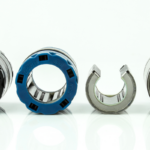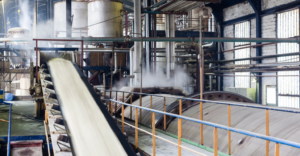
Bearings are not (and never have been) a one size fits all solution – let’s take load vs speed for example.
To put it simply, load and speed – or revolutions per minute (RPM) – are relative and will, no matter how we spin it – equal heat. If you specify the right bearing and maintain it appropriately, the heat will be minimal and won’t cause a problem. But if you specify the wrong bearing, there will be too much heat and you’ll be plagued with unplanned downtime.
Here are my top tips for specifying bearings according to load vs RPM:
High load, low RPM
Applications like cable rollers, crane wheels and pulley systems are characterised by very high loads, and comparatively low speeds.
The key considerations for bearing specification should therefore be:
- Choosing materials capable of handling substantial loads
- Ensuring proper lubrication for slow speeds to prevent wear
- Selecting bearing designs that distribute the load effectively
It’s important to pay special attention to factors such as alignment, clearances, and the potential for static loading. Regular maintenance is also crucial to extend the bearing’s lifespan under high-load, low-RPM conditions.
Low load, high RPM
When specifying for high-speed applications where load isn’t a particular concern, like screw, scroll or centrifugal compressors, it’s important to consider these factors in relation to the intended bearing application:
- Rotational speed
- Radial and axial loads
- Material properties
- Lubrication requirements
Remember to evaluate manufacturing precision for high-speed stability and assess potential heat generation to ensure the bearing meets specific tolerances and clearance criteria.
Additionally, factor in potential dynamic forces and vibrations associated with the application, and consider any environmental conditions that might impact performance.
Collaboration and consultation
When it comes to specifying bearings – no matter the variables – you are not alone. Collaborating with a manufacturer that offers consultative advice and a wide choice of bearing materials and types will ensure you avoid downtime even in the toughest applications.







No comment yet, add your voice below!